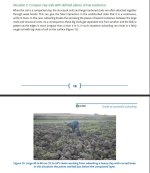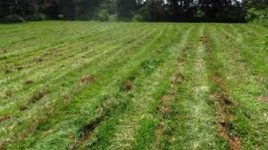Dadnatron
Veteran Member
I'm the OP on this and here a couple more pictures of chunks pulled up at 12" to 14". Most of these chunks are 1/4 to 1/2 or a little less than the size of a five gallon bucket. Lets see your sweet corn try to grow through that ground. I still find it hard to believe the compaction that forms in clay ground when I think not much is occurring
Classic example of dense clay subsoiling with parabolic (curved) shank. Dense clay breaking along predetermined paths.
Pages 22-23 fig 15 - in the article.

